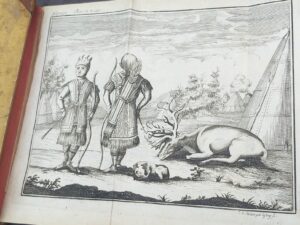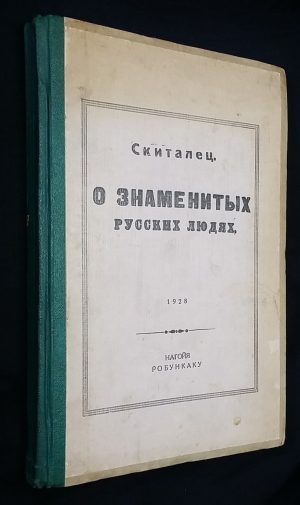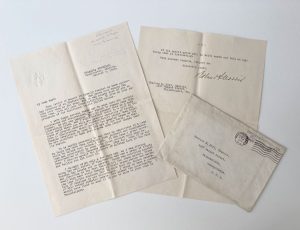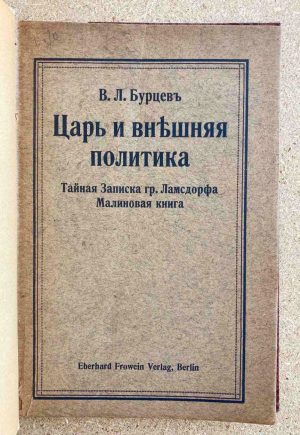Our Notes & References
A scarce, contemporary adaptation of Georgi’s groundbreaking work; this volume focusing inter alia on Siberian and Far Eastern peoples and illustrated with ethnographic plates and a map of the Baikal Lake. It includes the text of the first study of the Tungusic people and the Buryats.
A lovely example of this edition, rare on the market: although we could trace a few copies in libraries, OCLC locates only two holdings in the US: The Field Museum Library and University of Minnesota, and we could not find any copy at auction nor on the market in recent decades.
A native of Pomerania, the geographer, chemist and botanist Johann Gottlieb Georgi (1729-1802) accompanied both Johan Peter Falk and Peter Simon Pallas on their respective journeys through Siberia. In 1770-1774 he travelled in group expeditions and by himself through the Urals, Siberia, Baikal, Altai, and the territories of modern-day Buryatia and the Amur Region. In 1783 he became a professor of chemistry at St. Petersburg University and a member of the Russian Academy of Sciences.
“Thanks to his journeys, the first descriptions of such peoples as the Samoyeds (Nenets), Ostyaks (Khanty), Voguls (Mansi), Tungus, and Buryats were created” (Kisser). In his descriptions Georgi focused on the territory, the self-name of the people, their origins, colonisation, mobility, appearance, language, lifestyle, housing, food, moral qualities, clothing, marriage negotiations and festivities, funeral rites and religion. Each description introduces a handful of useful words for elements of households, clothing, or celebrations of each ethnicity.
Georgi published his texts in the 1770s, both in Pallas’ works and in his own, celebrated multi-volume ‘Description of All Nations of the Russian Empire’ (1776-80), in various languages but always in Russia. Our ‘Characteristics of Various Unknown Peoples of the Russian Empire’ is, we believe, the first European adaptation focusing on Georgi’s texts only. Of a pocket format, it seems to be part of a series of excerpts from Pallas’ travel, as we could find other similar volumes, published in 1773 and 1777 and focusing on other people (mostly Western and Southern Siberia).
In his 13 chapters, Georgi pays special attention to the Tungusic peoples (almost 80 pp.), “who defended themselves from the colonisers more strongly than other Siberian peoples”; he explains the differences of several Tungusic tribes and even their temperaments and voice tones. The illustrative folding plate shows two Tungusic hunters next to a resting deer drawn by Georgi himself: “the scene is ethnographically realistic and can be viewed both as a whole, with the mountainous taiga landscape, and in detail, examining the ornamentation of fur garments, facial tattoos, weaponry, the structure of the chum [tent] and the cut of its parts” (Kisser).
A substantial part of the chapter focuses on shamanism and the related instruments, which are also presented in a folding plate by Georgi. The following chapter on Buryats (50 pp.), a Mongolic ethnic group residing in the southe-eastern part of the Baikal lake, also describes various shaman practices and beliefs. Georgi’s documentation of these traditions is particularly important for it allows to trace “the degree of change that took place in the religious ideas of the Buryats […] Those who wrote about shamanism among the Buryats after Georgi, such as [Matthias] Castrén and [Serafim] Shashkov, in most cases used the materials of their predecessor when dealing with the visual aspects of the religion” (Khangalov).
Other chapters describe the Voguls (Mansi, an Ugric indigenous people) near Ekaterinburg and Ufa, the Ural Bashkirs (a Kipchak Turkic ethnic group), the Cheremis (Mari, a Finnic people) along the Volga and Kama rivers, the Chuvash people (a Turkic ethnic group) from Orenburg governorate, and the so-called Mordvinians (formed of two finno-ugric subgroups Mokshas and Erzyas) on the Volga and Oka in Nizhnii Novgorod and Kazan.
Some of the descriptions are curiously insightful: “Voguls in their behaviour are cheerful, honest, obedient, thrifty, not stupid, but frivolous, prone to disorder, unkempt in anger; they do not know literacy, do not count years […] Disorderly households, frequent festivities, addiction to alcohol expose them to poverty”. Georgi also provides a historical and political perspective “showing how the system of local governments was structured before the Russian conquest and afterwards” (Kisser).
The book additionally includes a long essay on Japan, based on the stories from a group of Japanese who came to the Irkutsk Japanese navigation school: “in Russia of the 18th century, information about Japan was extremely limited, [and this essay] was the first story told directly by the Japanese about Japan in Russia” (Shafranovskaia). The work includes information on the Japanese mineral resources, the structure of the state, court, main occupations of the population, clothing, food and religion. A lot of these descriptions use comparisons with the Chinese people and their culture because Georgi could see Chinese in Irkutsk, where “the houses and clothes are clean and decorated with Chinese taste, the chambers have Chinese paintings, dolls, vases, porcelain and lacquered crockery and carpets”.
Among other points of interest are Georgi’s observations of the first local attempts to vaccinate children against smallpox, the demographics in Siberia, the changes in the population of its colonists, as well as the review of the Argun mines, marble quarries, and his ideas about agricultural experiments in the Far East: “if people planted seeds according to the climate, it would be possible to live European-style in Kamchatka”.
Provenance
Early handwritten record to upper pastedown; Heldenberg (rectangular stamp to verso of title); Prof. Philip Longworth (1933-2021, historian and writer, esp. on Russian history).
Bibliography
Catalogue Russica M-876.
Matvei Khangalov, Sobranie sochinenii v trekh tomakh, Ulan-Ude, Respublikanskaia tipografiia, 2004.
Tatiana Kisser, “Etnorakursy sibirskogo puteshestviia I. G. Georgi”, Kunstkamera, #2, 2018.
Shafranovskaia T. K., “Iaponiia v seredine XVIII v. po soobshcheniiu I. G. Georgi”, Strany i narody vostoka, #13, 1972.
Physical Description
Octavo (16.5 x 10.3 cm). Title and 331 pp., folding engraved map and 2 folding engr. plates, one signed by J. D. Philipp.
Binding
Contemporary half calf over yellow boards, spine with raised bands, gilt fillets, brown morocco label lettered in gilt, all edges red, green silk bookmark.
Condition
Binding lightly rubbed and soiled, corners a bit bumped, foot of spine gently restored; minimal foxing or browning internally – an attractive example of this rarity.




















